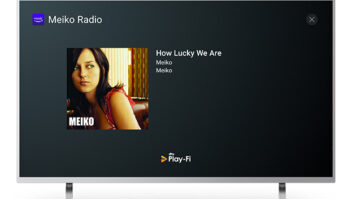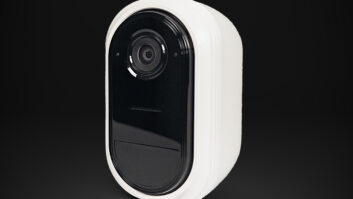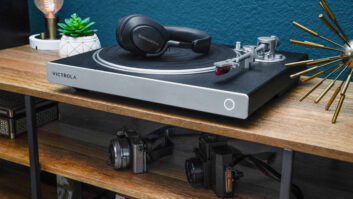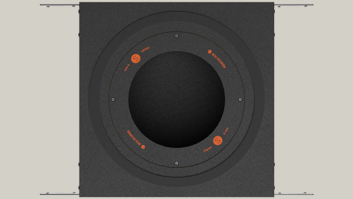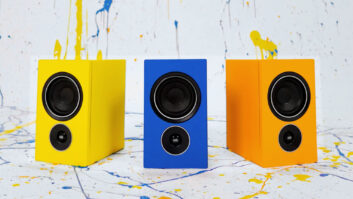With 2.5 million square feet of show floor space, there is just too much eye-candy at the International Consumer Electronics Show to cover everything in a single post. In my first part (click here to read) I covered some video-centric items like LG’s OLED, Sony’s CLEDIS, HDMI version 2.1, and Dolby Vision.
In this post I dive into some of the audio items that got me excited at CES.
Play-Fi Continues to Partner Up

DTS continues to add partners to its Play-Fi ecosystem, and each BB in the jar is another potential shot at Sonos’ dominance in the market. At International CES, I discovered four notable additions to the Play-Fi lineup: the DISH Hopper, Thiel Aurora LifeStream, Soundcast VG10, and the Arcam rPlay, which bring the partner count up to nearly 30. Further, Onkyo, Pioneer, and Integra have committed to adding Play-Fi to more than 100 products in 2017.
The DISH agreement could be the most disruptive as it potentially adds thousands of new Play-Fi users instantly to the fold. The Soundcast VG10 is notable as it will be the first wireless, truly outdoor Play-Fi speaker. Both the Arcam rPlay and Thiel LifeStream take a high-end approach, with rPlay offering both fixed and variable analog outputs along with coaxial digital, and LifeStream taking advantage of Thiel’s legendary audio performance.
Emotiva’s 16-Channels of High Performance

The mid-level preamp/processor market seems to shrinking, as it is tough to compete against full-featured receivers on the low end and cost-is-no-object models on the high-end. This is an area where Marantz and Integra have both done well, but at the show I saw a new model from Emotiva that really caught my eye as the only processor to handle more than the usual 7.1.4 Atmos speaker complement for less than $15,000!
The new Emotiva RMC-1 was built to be a no-holds-barred performance beast and is expected to sell for $4,999. Beyond 8/2 HDMI 2.0b/HDCP 2.2 connections, it features 16 fully balanced channels, along with an entirely analog preamp section incorporating 32-bit AD/DA conversion to accommodate speaker configurations up to 7.3.6. Beyond Atmos and DTS:X, the system can also support Auro-3D via an optional upgrade. For the best sound in any room, the RMC-1 incorporates Dirac Live 13.3 room correction, and offers an 11-band parametric EQ on each channel, and Room EQ Wizard compatibility.
Wearables, IoT, and Drones

Venture into the Sands Expo convention center or the South Hall of the LVCC and you are inundated with probably close to 100 companies all competing in what seems a very similar categories. It is all a bit overwhelming.
With the IoT space, honestly, how many versions of the same automated light control, smart door lock, or connected thermostat do we need? There are also numerous hubs all essentially looking to become the central control point of the connected home.
As someone familiar with the space, I still couldn’t keep them all straight, and frequently just wandered around wondering how a consumer could ever possibly makes heads or tails of things. Hopefully standards like zigbee and Z-Wave will help to consolidate some of these offerings and allow the companies that survive to be integrated with the automation solutions that we prefer.

The same is even truer in the wearables space. Not content to merely count steps, distance, pulse rate, and calorie consumption, there are wearables to track your body’s fat composition, your alcohol consumption, your calorie intake, your blood pressure, your blood oxygen level, your UV exposure, and to monitor your EKG. You could easily end up looking like Flavor Flav if you opted to have a wearable to track your every movement and exposure. While this is clearly an exploding space, it seems like one that is ripe for consolidation, where a few players gobble up the little guys resulting in some mega-trackers we can all get excited about.
Mirai Botnet Protection

A few months ago, probably less than 0.01 percent of the world’s population knew what the Mirai Botnet virus was. Then you get a hack, some poorly secured IoT devices get infected and go all zombie, start a mass DDoS attack, and the internet crashes, causing life as we know it to come to a halt. Let’s just say that these lesser-known IoT companies were taking this to heart, with many specifically asserting that their devices are immune to Mirai-type attacks. (Obviously, whether this is true or not remains to be seen.)
One product I saw that seeks to be a plug-and-play method of providing networking security is Dojo. Designed to bring enterprise-class security to a home, Dojo connects to the existing router and then constantly monitors all incoming and outgoing traffic with deep packet detection to analyze, detect, and immediate terminate any nefarious activity. Dojo comes with Pebble, the small, black, umm, rock-looking device that sits out in a conspicuous location to give a visual notification of network security to homeowners, and also includes an app for remote notifications. Dojo comes with one year of monitoring service, $99/year thereafter.
DEG: No Discs for You!
One of the marquee invites at CES is the Digital Entertainment Group (DEG) party. Each year there is a brief rah-rah series of announcements where they discuss the top disc retailers and titles of the year, then they give away the ultimate swag bag: a backpack literally stuffed with Blu-ray discs.
This year I was expecting that the DEG would pack the bag with an assortment of Ultra HD discs to really push and promote the latest format, especially after the Ultra HD Blu-ray Batman vs. Superman was crowned the Disc of the Year. Shockingly, this year’s giveaway didn’t contain a single disc, instead just codes to download digital versions of the films. This seemed to paint a somber tale when the very organization behind physical media chose to not give out a single disc. And I can tell you there was a lot of grumbling around the room at this news.*
Perhaps not so coincidentally, recently released 2016 sales number say that for the first time ever, disc sales ($5.4 billion) were eclipsed by streaming numbers ($6.2 billion). Perhaps this is truly the sad sunset of physical media.
(*In the ultimate version of Karma payback, after grousing long and hard about the lack of any new discs to feed into my Kaleidescape, I actually left my DEG giveaway bag on the Monorail. I hope that whoever found it at least has an UltraViolet account…)
GoldenEar Triton Reference

For me, no trip to the Venetian audio suites is complete without stopping in to visit with GoldenEar Technology founder, Sandy Gross. For the past several years, Gross has been using CES as the springboard to launch his latest affordable high-end audio offering. Just a couple of years ago, Sandy released the flagship Triton One which received mass acclaim both from critics and consumers. This year he decided to up the ante even further with the new Triton Reference. Visually, the speakers are far more refined, eschewing the black sock-wrapped design of other Triton models and going with a one-piece cabinet boasting a hand-rubbed lacquer finish. The result is a far sleeker, more modern, more finished look that truly speaks high-end, even while the speakers are sitting silent.
To push the sonic boundaries of the Reference into actual reference territory, all of the model’s components are new, including the newly engineered 6×10-inch active low-frequency drivers with 40 percent more surface area than the One’s drivers, a 6-inch bass/mid driver with new low-mass voice coil, and a new Reference HVFR tweeter with 50 percent more neodymium magnet material for faster and improved response up to 35kHz. The Reference also features the largest drivers in the Triton lineup, with three 6×10-inch long-throw quadratic sub-bass drivers coupled to four 10.25×9.5-inch planar infrasonic radiators driven by a 56-bit, DSP-controlled, 1,800-watt ForceField amplifier, with two 6-inch mid-bass drivers, and one High-Velocity Folded Ribbon tweeter.
From the opening notes of “Fanfare for the Common Man,” Sandy’s first demo track, it was apparent the new Reference delivered low-frequency depth and extension that played deeper and fuller than the Triton Ones. The horn and trumpet blasts sounded intimate and live, full of detail and energy. Another demo track featuring a pipe organ proved the Reference could reach down to sub-20Hz frequencies and activate all of the air in the large demo suite, while another featured standing bass with string plucks so taught and powerful you could feel the airwave punching your chest. All of this bass energy didn’t come at any expense of speed and detail, as the upper end remained lightning quick and responsive.
At $8,500/pair, GoldenEar is reaching a new price level with the Reference, but sonically, they easily rise to the challenge.
HRA Continues Push – But does anyone care?

Don’t get me wrong; I think Hi-Res Audio is great and that the recordings often sound terrific. The files are often more open and airy, cleaner and more detailed, and more revealing of fine details. And if you gave me the choice of getting an album in 16.1/44 or 24/192, I’d pick the Hi-Res version every time.
Year after year there seems to be a push for HRA at CES, and this year was no different. There was the whole Hi-Res Audio Pavilion focusing on companies extolling Hi-Res. Sony also had a slick Hi-Res “listening bar” in its booth. And by this point, you seriously can’t put out an audio product—speaker, streamer, soundbar, portable, etc.—that isn’t HRA compatible. (Unless you’re Sonos, that is…)
But regardless of what all the audiophiles in the industry want to believe, HRA just doesn’t seem to be making an impact at the consumer level. Without exaggeration, we have yet to have a single person come in to our showroom asking about Hi-Res Audio. And when you try and explain it to them, most of them just kind of go 1,000-yard stare and want to get back to making sure that whatever we’re selling them will work with Pandora. I can’t help but wonder if HRA is one of those industry buzzwords that has a lot of hope and expectation behind it, but that never really catches on. Like 3D.
Some potentially big news on the HRA front was the support for “Stream the Studio,” where companies like Rhapsody, Pandora, and HD Tracks have expressed commitment to making streamed Hi-Res a reality. In the “happening now” category, the first streaming service to actually deliver Hi-Res audio in the form of MQA (Master Quality Authenticated) was Tidal. This makes numerous MQA titles instantly available to all Tidal HiFi subscribers. Having heard MQA demos in the past, the audio quality is far superior to traditional streaming offerings, and this could be the mass-market HRA shot that starts the listening revolution!
SVS Seismic Subs

Deep, gut-wrenching, soul-rending bass is what makes home theater exciting. Feeling that impact tremor from a dinosaur foot stomp, or the immense pressure wave passing through you from an on screen explosion is what separates the boys from the men in a reference theater. But you can’t get seismic, heart massaging bass from a small driver. And this is a lesson that SVS Sound took to church with its new SB16 and PB16-Ultra subs.
The SVS demo delivered the most powerful, visceral bass performance I experienced at CES. Even at medium volume levels, the massive 16-inch driver pummeled the room with bass, producing notes that delivered that tactile “pants flutter” sensation that only the best subs can. During the Hulk versus Hulk Buster scene from Avengers Age of Ultron you could nearly feel your organs compressing under the massive low-frequency assault. And proving that the subs can handle music as well, SVS put on a Police concert video that had giant drum notes that delivered chest concussion waves similar to a live concert venue.
I’m excited to bring the SB16-Ultra in for demo…and imagine that it will be finding a permanent home in my theater.
Celebrity Sighting

In the past I’ve randomly walked into Portia de Rossi and Ellen, Fred Willard, Lisa Loeb, Ice T, David Blaine, and others, at CES. This year there seemed to be far fewer celebs in attendance. My only sighting last week was Shaquille O’Neal, who was attending as a panelist from Turner Broadcasting’s Inside the NBA. We happened to both be leaving the Sands and heading up to the Venetian at the same time, and I followed about 10 feet behind him for perhaps five minutes. Shaq is a mountain of a man; absolutely huge in every regard as he strode through the casino. Though it doesn’t look like he’s been running up and down the court too often lately. Just sayin’…
